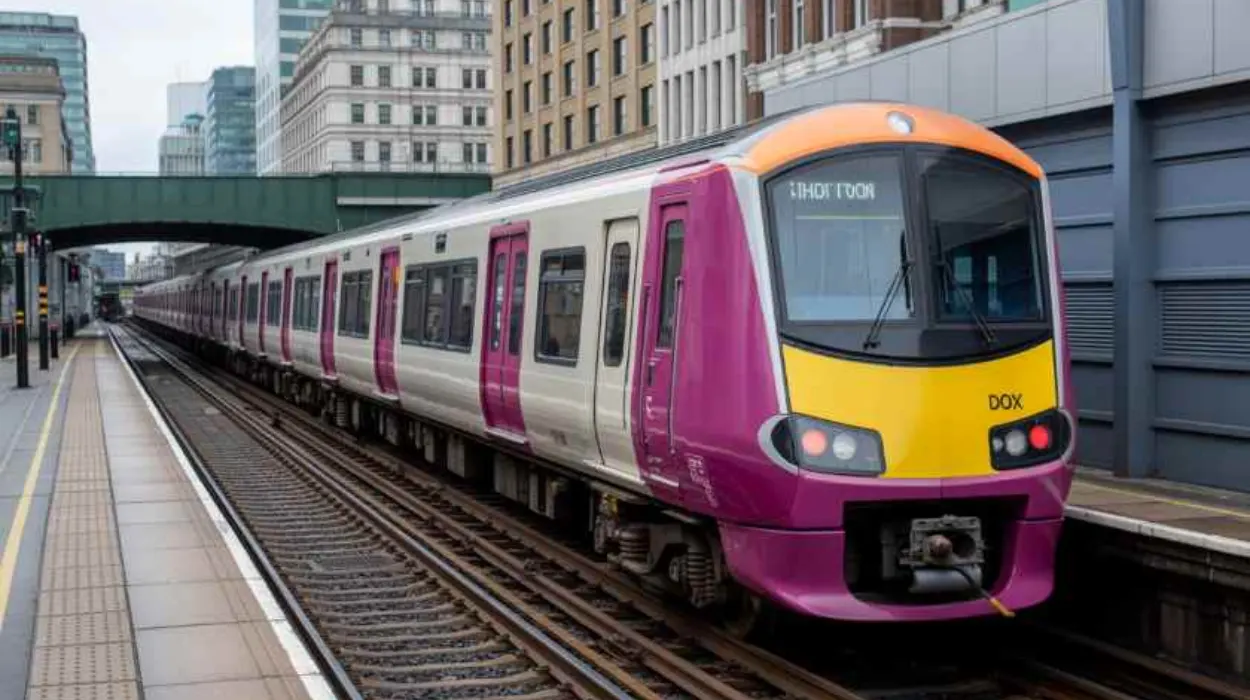Key Points
- The first of 54 brand-new Docklands Light Railway (DLR) trains has entered service, marking a major upgrade of London’s vital transport network.
- These new trains offer 10% more capacity per train, improving overall DLR capacity by over 50% once all are operational.
- Features include spacious walk-through carriages, air conditioning, live travel information screens, mobile device charging points, and enhanced accessibility with dedicated wheelchair spaces.
- The upgrade is funded by £260 million government investment, a £500 million National Wealth Fund loan, and contributions from London City Airport.
- The new trains aim to improve travel reliability and support growth in new homes and jobs, especially in Stratford, Woolwich Arsenal, and the Isle of Dogs.
- The full fleet replacement is expected by the end of 2026, with new trains set to keep pace with rising passenger demand.
- Mayor of London Sadiq Khan and London Transport Commissioner Andy Lord have endorsed the transformational impact of these trains on East and South London transport.
The first of 54 new DLR trains has entered passenger service, signalling a major transformation of one of London’s most essential transport links, reports Rebecca Smyth of Rail Industry Connect. This upgrade replaces some of the oldest trains in the fleet, some operating for more than thirty years, with modern, state-of-the-art units featuring the latest technology to boost capacity, comfort, and reliability.
What Are the Key Features of the New DLR Trains?
According to the London Post, the new DLR trains boast several customer-focused innovations. Each train has walk-through carriages designed to increase capacity by 10% compared to existing trains. The trains are air-conditioned, addressing comfort on warmer days. They also come equipped with live travel information screens, mobile device charging points, and dedicated spaces for wheelchairs, pushchairs, bicycles, and luggage to enhance accessibility and convenience.
Andy Lord, London’s Transport Commissioner, emphasised the impact of these features: “These state-of-the-art trains will transform customers’ journeys across the DLR network. We are boosting capacity and improving reliability to help the DLR keep pace with growing demand in this vibrant part of London. Customers will benefit from more comfortable, frequent, and accessible services.”
How Will These New Trains Improve Travel Across East and South London?
Transport for London (TfL) and the Mayor of London stress that the trains will drastically improve travel experiences on the DLR, particularly in East and South London areas served by the network, including Stratford, Woolwich Arsenal, and the Isle of Dogs. As captured by Katie Jones in The Independent, Mayor Sadiq Khan said,
“This is an exciting day in east and south London with the introduction of these brand-new trains marking a major milestone in the transformation of the DLR to improve travel for millions of Londoners.”
The new trains will increase overall DLR capacity by more than 50% once the entire fleet upgrade is complete by the end of 2026. This capacity boost will support the area’s rapid development by providing reliable, comfortable travel to accommodate new jobs and homes. Khan added, “I’m committed to modernising infrastructure on London’s transport network, which is vital for faster, greener, and safer journeys that are accessible for all.”
What Is the Scope of the DLR Network and How Will It Connect Passengers?
The Docklands Light Railway is a driverless light rail system serving key destinations in East and Southeast London. As outlined by Visit London and TfL, the DLR connects hubs such as Bank and Tower Gateway in the City of London, Canary Wharf in the Docklands financial district, Stratford, Beckton, London City Airport, Greenwich, Lewisham, Woolwich Arsenal, and the Isle of Dogs. It also links with other transport modes, including the London Underground and the IFS Cloud Cable Car.
The system operates from early morning to after midnight, with Sunday services starting later and ending earlier, accommodating millions of commuters and tourists. This network is crucial to London’s growth, and the upgraded trains will support increased service reliability and frequency to meet rising passenger demand.
Who Is Funding the New DLR Trains and What Are the Investment Figures?
The new state-of-the-art DLR trains are funded through a combination of government and organisational investment. Transport for London confirms that £260 million has come from government investment via the Housing Infrastructure Fund, supplemented by a £500 million loan from the National Wealth Fund. London City Airport also contributed more than £5 million.
This substantial financial backing shows the importance placed on modernising the DLR infrastructure to accommodate London’s expanding population and economy while supporting sustainable transport.
What Are the Expected Timelines and Future Plans for the DLR Fleet?
The rollout of the 54 trains officially began in late September 2025, with the first trains currently in service. As noted by BBC News and Global Railway Review, the full fleet replacement is anticipated by the end of 2026. Additional trains will be introduced as swiftly as possible throughout this period to ensure capacity is consistently boosted to handle growing passenger numbers.
